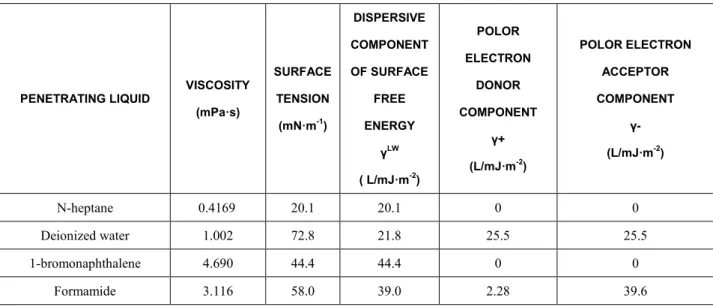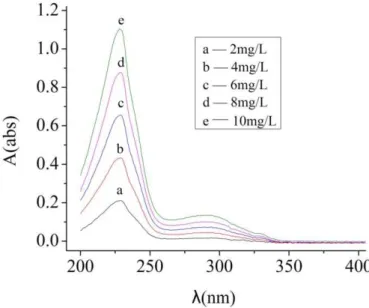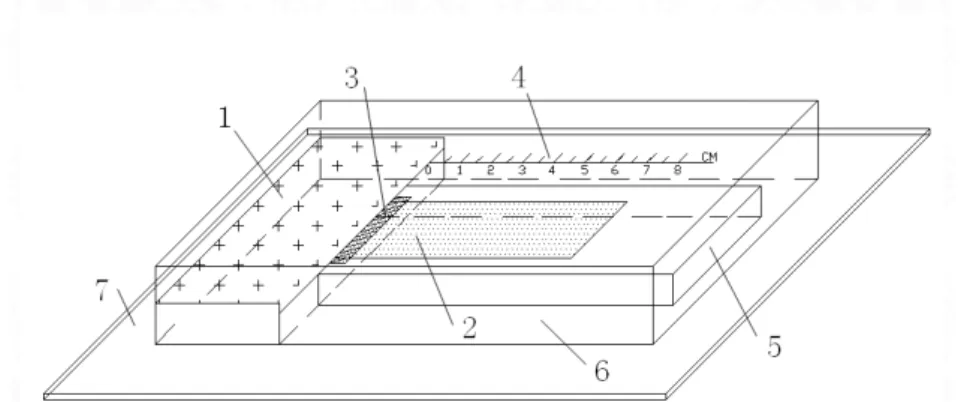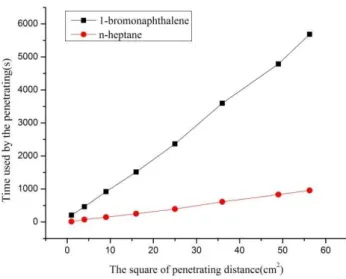ISSN 1517-7076 artigo 11740, pp.733-741, 2016
Determination of relevance between
surface free energy and adsorption
capacity of cement particles
Jihai Yu1, Zhengmao Ye1, Zhenzhen Xia1, Bin Wu1,
Pengkun Hou1
1
Shandong Provincial Key Laboratory of Preparation and Measurement of Building Materials, University of Jinan, Jinan, Shandong Province, China
e-mail: shenlan_990223@163.com; mse_yezm@ujn.edu.cn; xzz891603086@126.com; 983094698@qq.com; 122567517@qq.com
ABSTRACT
The compatibility between superplasticizer and cement was influenced by the adsorption capacity of cement particles. This study investigated the relevance between the adsorption capability and surface free energy. Adsorption capacity and surface free energy of both sulphoaluminate cement and portland cement were measured. The adsorption capacity of cement particles was measured by ultraviolet spectrophotometry. The test showed that particles of sulphoaluminate cement adsorbed more molecules of superplasticizer than portland cement particles. The weight of superplasticizer adsorbed by 2g of sulphoaluminate cement and portland cement were 0.28mg and 0.159mg respectively. Surface free energy of cement particles was calculated by contact angle and the contact angles were determined by the thin-layer wicking technique and washburn equation which is theoretical basis of thin-layer wiching technique presented by Chibowski E. The sulphoaluminate cement, portland cement’s surface free energy were 51.46 mJ·m-2 and 49.36 mJ·m-2 respectively. The results showed that the higher adsorption capacity of particles was usual accompanied by higher surface free energy. The fluidity of cement paste was influenced by the adsorption capacity of cement particles because the more molecules of superplasticizer was adsorbed by cement particles there were lacking superplasticizer in the paste. The macro-behaviour of higher adsorption capacity is that the cement paste need more superplasticizer to reach the needed fluidity.
Key words: surface free energy, adsorption, fluidity.
1. INTRODUCTION
have a tendency to adsorb a high amount of superplasticizer, while the cements containing high amout of soluble alkali do not. CHIOCCHIO G et al.[7] and HSU K C et al.[8] found that The fluidity of portland cement pastes is greatly affected by the time of addition of the superplasticizers. When the addition of superplasticizer is delayed the workability is always found to be higher. However there are few reports about the relevance between adsorption capability and surface free energy of cement particles. It is necessary to research the relationship between adsorption capability and surface free energy for further study on the adjustability between cement and superplasticizers. In addition, the surface free energy of the cement also has been investigated [9,10] because of its influence on the wettability of the components of cement materials and their surface interactions[11,12]. In this paper, adsorption capacity and surface free energy of cement particles were discussed. The fluidity of cement paste was measured to show influence of adsorption capacity on adjustability between cement and superplasticizers.
2. MATERIALS AND METHODS
2.1 Materials
Table 1: Chemical composition and physical properties of cement (wt%).
Sulphoaluminate cement and portland cement were produced by factories in Shandong Province. The chemical components and physical properties of the cement materials are listed in table 1. Propanetriol, 1-bromonaphthalene and deionized water were used as penetrating liquids to compared with n-heptane, respectively. The physical properties of the penetrating liquids are presented in table 2. Propanetriol was used as probe liquids in the determination of the surface free energy. All the reagent used in the test were analytical grade and commercially available.
Table 2: Viscosity, surface tension and surface free energy parameter of the penetrating liquids at 25.
PENETRATING LIQUID
VISCOSITY
(mPa·s)
SURFACE
TENSION
(mN·m-1)
DISPERSIVE COMPONENT OF SURFACE FREE ENERGY γLW
( L/mJ·m-2)
POLOR
ELECTRON
DONOR
COMPONENT
γ+
(L/mJ·m-2)
POLOR ELECTRON
ACCEPTOR
COMPONENT
γ-
(L/mJ·m-2)
N-heptane 0.4169 20.1 20.1 0 0
Deionized water 1.002 72.8 21.8 25.5 25.5
1-bromonaphthalene 4.690 44.4 44.4 0 0
Formamide 3.116 58.0 39.0 2.28 39.6
CEMENT SiO2 Fe2O3 Al2O3 CaO MgO SO3
DENSITY
(g·cm-3)
SPECIFIC SURFACE AREA
(m2·kg-1)
Sulphoaluminate
cement
10.96 3.71 28.9 45.25 1.45 8.88 2.90 367.0
2.2 Methods
Naphthalene based superplasticizer was used as adsorbent. Before this test, naphthalene based superplasticizer solutions with different concentration were taken for ultraviolet spectrophotometry to find the characteristic absorption peak, as is shown in the figure 1. A curve of concentration to absorbance can be obtained by linear fitting method at the wavelength of 229nm, which was shown in figure 1. In the test, 2g of cement were put into 100g deionized water to get the suspension of cement particles. Naphthalene based superplasticizer was added into the suspension as soon as the cement was put into the deionized water. A certain amount of suspension was taken out for centrifuging and the supernatant was taken for ultraviolet spectrophotometry as soon as superplasticizer was added in. Then the absorbance of the supernatant can be got. The weight of superplasticizer adsorbed by cement particles could be calculated refer to the standard adsorption curve of the naphthalene based superplasticizer as is shown in figure 2.
Figure 1: The adsorption spectra of standard solution of naphthalene-based superplasticizer.
The usual measurement of contact angle can’t be used in this test, because the probing liquid used in the contact angle measurement has a low viscosity and can infiltrate into the thin layer of cement particles quickly. VAN OSS et al.[13] have calculated that the contact angle of the probe liquid on cement particles sample can be generally determined by the thin-layer wicking technique. The figure 3 is the diagram of experimental device. CHIBOWSKI E et al. [14] have calculated that the contact angle of powders can be obtained via Washburn equation(equation 1). The results were reported in table 4. The surface free energy which conclude γS+ (Polor electron donor component) and γS- (Polor electron acceptor component) of a
cement powder has been studied [15,16] that it can then be calculated by the Lifshitz-van der Waals equation(equation 2-6) .
1-penetrating fluid and degreasing cotton, 2-glass slide covered by thin layer of cement particles, 3-medium speed
filter paper, 4-scale, 5-supporting, 6-out cover, 7-base plate
Figure 3: The diagram of experimental device of contact angle.
2 . . .cos 2 eff
t R
X
(1)
1
2
1 cos 2
LW LW LW
S S S
L a L a L a L a L a L a
(2)
1
2
1 cos 2
LW LW LW
S S S
L b L b L b L b L b L b
(3)
γSLW=γLLW(1+cosθ)2
4 (4)
2
AB
S S S
(5)LW AB
S S S
(6)3. RESULTS AND DISCUSSION
3.1The adsorption capacity of sulphoaluminate cement and portland cement
The experiment results of ultraviolet spectrophotometry listed in table 3 showed that the adsorption capacity of sulphoaluminate cement was higher. The concentration of superplasticizer in the suspension can be calculated by the standard absorption spectrum of naphthalene based superplasticizer then the adsorbance of superplasticizer by cement particles can be calculated. The weight of superplasticizer adsorbed by sulphoaluminate cement and portland cement were 0.28g and 0.159g respectively. The result was correspond to the laboratory finding of LIU et al.[17] They found that the adsorbing capacity of sulphoaluminate cement is 1.2-2.5 times of the adsorbing capacity of portland cement.
Table 3: The absorbance of the supernatant and the weight of superplasticizer adsorbed by cement particles.
SAMPLE
THE ABSORBANCE OF
SUPERNATANT (abs)
WEIGHT OF SUPERPLASTICIZER
ADSORBED BY CEMENT PARTICLES
(mg)
Sulphoaluminate cement 0.348 0.282
Portland cement 0.482 0.159
3.2 The surface free energy of sulphoaluminate cement and portland cement particles
Wicking technique was suitable to measure the contact angle. The curves as is shown in figure4 and figure5 could be got by averaging the testing values of repeated measurements.
The thin-layer wicking measurement results are depicted in Figure 4 and Figure 6. The curves were fitted via the origin point to get the slope values and contact angles were calculated by Washburn equation(equation 1) which is presented by CHIBOWSKI E et al. [14]. The data are listed in table 4. The contact angle of deionized water on the cement powder we have measured was close to the experimental result of LIU et al. [9] Substituting the contact angle of 1-bromonaphthalene in table 4 into the Lifshitz-vander Waals equation (equation 2-6), one can calculate the surface free energy of the samples.
Figure 4: Square of distance of deionized water and n-heptane moved through the thin plate of sulphoaluminate cement
Figure 5: Square of distance of n-heptane and 1-bromonaphthalene moved through the thin plate of sulphoaluminate
cement particles against time used.
Figure 6: Square of distance of n-heptane and formamide moved through the thin plate of sulphoaluminate cement
Table 4: K values and the contact angles of the penetrating liquids at the surface of sulphoaluminate cement.
FLUID
SLOPEOF PERMEATION
CURVES K
CONTACT ANGLE /°
N-heptane 17.08 0
Deionized water 16.99 51.84
1-bromonaphthalene 98.62 24.13
Formamide 34.77 43.5
The surface free energy, γs of the cement samples can then obtained. The method to calculate the surface
free energy of portland cement particles is the same with sulphoaluminate cement particles, so the procedure was abbreviatory. The final results are presented in table 5.
Table 5: Surface free energy of test samples.
SAMPLE
SURFACE FREE ENERGY γs
/mJ·m-2
Sulphoaluminate cement 51.51
Portland cement 49.36
The datas in table 5 shows that the surface free energies of two kinds of cement were 51.51 mJ·m-2 and 49.36 mJ·m-2, it can be seen from Table 5 that the surface free energy of the sulfoaluminate cement particles is higher.
The adsorption capacity and surface free energy of cement particles have hydrated for 6 hours were also measured for further study on the relevance between adsorption capacity and surface free energy. The weight of superplasticizer adsorbed by cement particles increased to 0.46mg and 0.311mg. The surface free energy of two kinds of cement partcles were 58.25 mJ·m-2 and 56.32 mJ·m-2 respectively. In other words, higher surface free energy represents higher adsorption capability of cement partecles.
3.3 The cement paste fluidity of sulphoaluminate cement and portland cement
The fluidity of both portland cement and sulphaluminate cement paste were measured by miniflow test. The result was shown in table 6.
Table 6: The fluidity of portland cement and sulphoaluminate cement paste (mm).
PORTLAND CEMENT SULPHOALUMINATE CEMENT
Content of superplasticizer (%) 0.5 0.7 1.0 1.3 1.5 1.7
Initial fluidity (mm) 175 235 255 185 235 252
Fluidity after 30 minutes (mm) — 160 190 — — 145
water, the following hydration of the internal part of cement particles would be influenced and the performance of the cement materials would be worse. The above measurement results suggest that the sulphoaluminate cement need much more superplasticizer to achieve expected effect. The data in the table6 also showed that the fluidity loss ratio of sulphoaluminate cement paste is higher than that of portland cement paste because the hydration of sulphoaluminate cement is faster than portland cement, more molecules of superplasticizer were covered by hydration products of sulphoaluminate cement particles.
4. CONCLUSION
The adsorption capacity of sulphoaluminate cement particles were stronger and it increased during the hydration of the cement. The weight of superplasticizer adsorbed by cement particles are 0.28mg and 0.159 mg respectively, the weight of superplasticizer adsorbed increased to 0.46mg and 0.311mg when the cement particles have hydrated for 6 hours.
The surface free energy of two kinds of cement partcles were 51.51 mJ·m-2 and 49.36 mJ·m-2 respectively, which were 58.25 mJ·m-2 and 56.32 mJ·m-2 when the cement particles had been hydrated for 6 hours. This shows the same tendency with adsorption capacity. The adsorption capacity of cement particles can also be reflected by cement paste fluidity. The stronger adsorption capacity of cement particles the poorer fluidity of cement paste.
The results of investigation show that the adsorption capacity of cement particles increases with higher surface free energy. This approach provides a new way to reflect the adsorption capacity of cement particles and has great potential for improving the compatibility between cement and superplasticizers. Therefore, many further works remain to be done to definite the relevance between adsorption capacity and surface free energy of cement particles.
5. ACKNOWLEDGMENTS
This work is supported by National Natural Science Foundation of China (No. 51272092, No.51302105). Meanwhile, this work is supported by Program for Scientific Research Innovation Team in Colleges and Universities of Shandong Province.
6. BIBLIOGRAPHY
[1] WANG, H. “Compatibility of Concrete Water reducers With Cement”, J. Shandong Building Materials
n.1, pp. 8-10, Sept. 2005.
[2] QU, J.D., PENG, J.H., CHEN, M.F., et al., “The research progress of adsorption properties of water reducers on the cement particles”Journal of Building Materials, v.8 n.4, pp. 410-417, Aug. 2005.
[3] MALHOTRA, S. K, MASOOD, I., MALHOTRA, S. K., “Compatibility of superplasticizers with
different cements”Construction and Building Materials, v.14 n.5, pp. 253 -257, July 2000.
[4] ERDOGDU, S. “Compatibility of superplasticizers with cements different in composition”, Cement and
Concrete Research, v.30 n.5, pp. 767 -773. May.2000.
[5] KRISHNA R N. “Dispersing action of a superplasticizer with different grades of cements and fly ash”
ACI Materials Journal, v.93n.4, pp. 351 -355. 1996.
[6] KIMA, B.G, JIANG, S.P, JOLICOEUR, C. “The adsorption behavior of PNS superplasticizer and its relation to fluidity of cement paste”, Cement and Concrete Research, v.30 n.6, pp. 887 -893, June 2000.
[7] CHIOCCHIO G, PAOLINI A E. “Optimum time for adding superplasticizers to Portland cement pastes”,
Cement and Concrete Research, v.15 n.5, pp. 901 -908, Sept.1985.
[8] HSU, K. C, CHIU, J. J. “Effect of addition time of a superplasticizer on cement adsorption and on
concrete workability”, Cement and Concrete Composites, v.21 n.5, pp. 425 -430. Dec. 1999.
[9] LIU, J.P., LI, H., TIAN, Q., WANG, Y. J., “Determination of dynamic contact angles of cement and mineral admixtures based on thin-layer wicking technique”. Journal Of Southeast University(Natural
Science Edition), v.43 n.5, pp,1074-1079, Sept. 2013.
[10] ZHU, Y.J., Effect Mechanism Research of Water Reducer on Dry Shrinkage of Cement Concrete, Tese
de M.Sc. China Building Materials Academy, Bei Jing, China, 2006.
[11] ASAMOTO, S., ISHIDA, T., “Microscopic approach to time-dependent deformation mechanism of
[12] SUN, Z. W., Influence of surface energy on fracture energy and strength of cement based materials, Qing Dao, Qing dao Technological University, 2008.
[13] COSTANZO, P.M., GIESE, R.F., VAN OSS, C.J., “The determination of surface tension parameters of
powders by thin layer wicking” Advances in Measurement and Control of Colloidal Processes
,
pp,
223-232, 1991[14] CHIBOWSKI, E., GONZALEZ-CABALLERO, F., “Theory and practice of thin-layer wicking”.
Langmuir, v9 n1. pp. 330-340, Sept. 1993.
[15] VAN OSS, C.J., GOOD, R.J., CHAUNDURY, M.K., “The role of van der Waals force and hydrogen
bonds in hydrophobic interaction” between biopolymer and low energy surfaces” Journal of Colloid
Interface Science, v.111 n.2. pp. 378-390, June, 1986.
[16] FOWKES, FREDERICK, M., “Role of acid-base interfacial bonding in adhesion”Journal of Adhesion
Science and Technology, v.1 n.1. pp. 7-27,1987.
[17] LIU, T., LI, Y.J., CHEN, J., et al., “The research of adsorption of naphthalene-based superplasticizer on alite-sulphoaluminate cement”, Concrete, v.20 n.4. pp.73-76, 2013.
[18] ZHANG, M., ZHANG, D.C., WU, B., et al., “Compatibility of Water reducers With Sulphoaluminate





